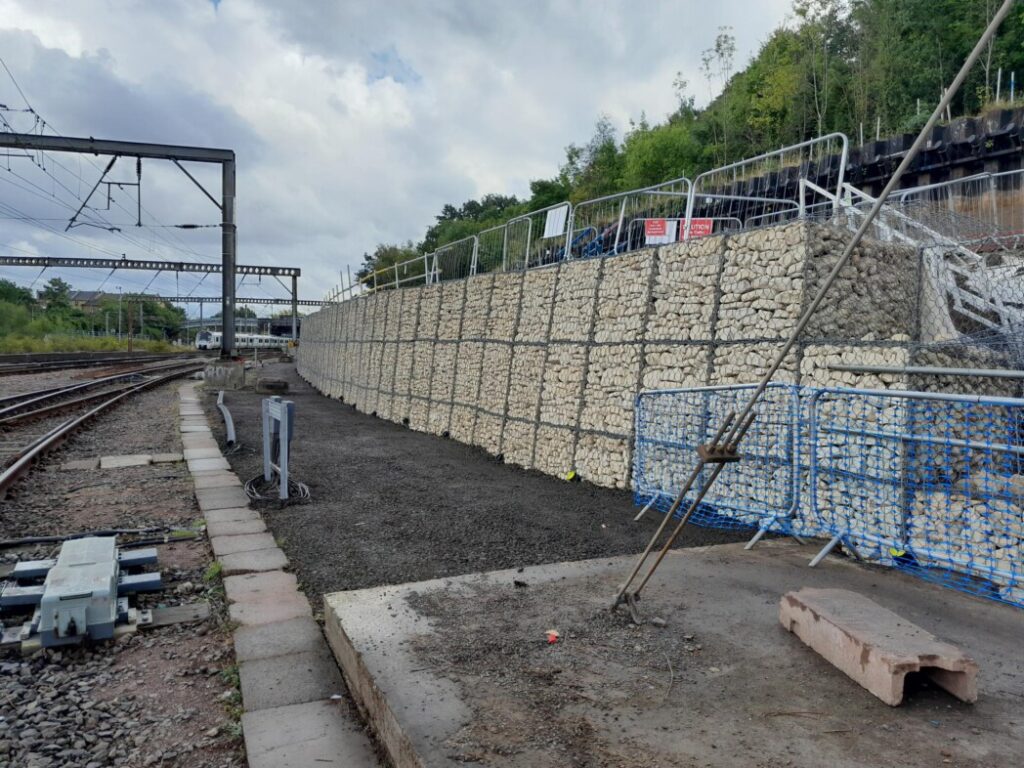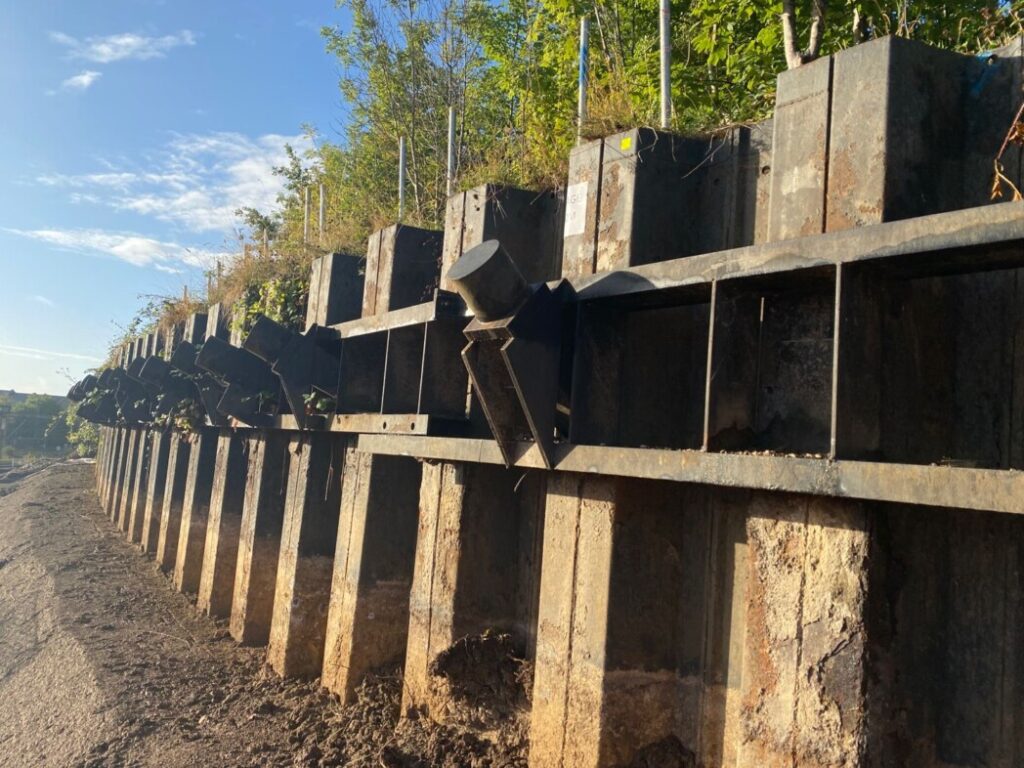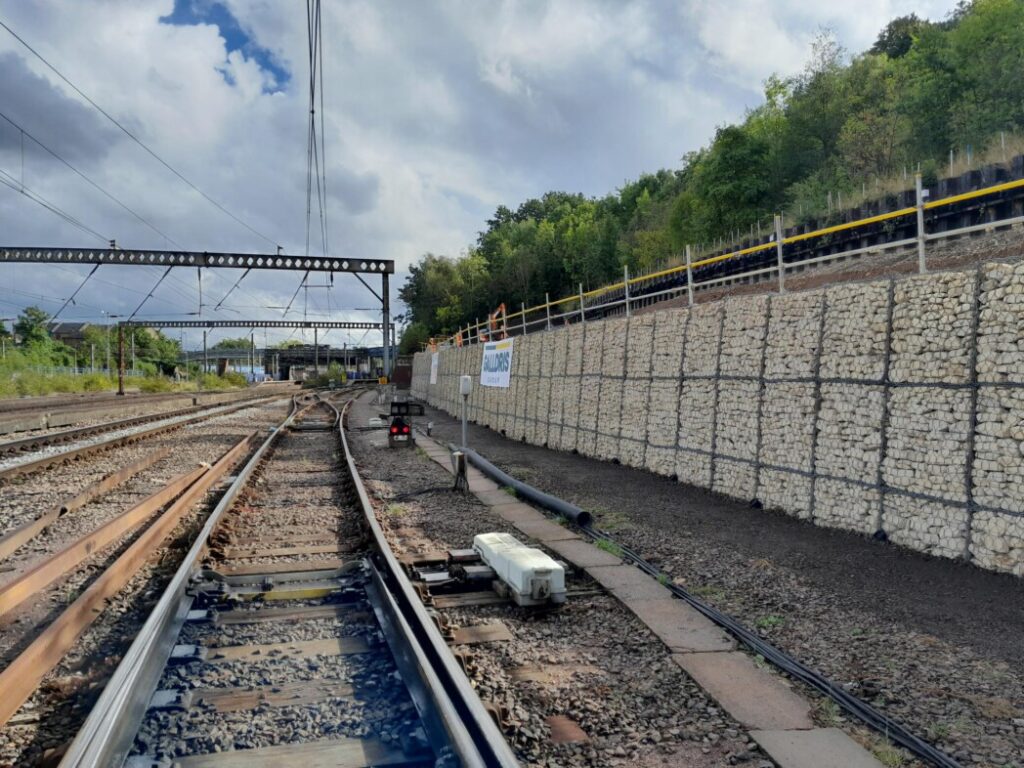
Engineers Turn Detective To Solve 50-Year Conundrum
26/09/2022 - posted in Civils, Geoenvironmental, HBPW News, Innovation, Inspections, Rail, The Team, Value EngineeringA problem of land slippage which threatened to compromise part of the East Coast mainline, has been solved thanks to a 12-month investigation in which HBPW engineers turned detective, delving into the annals of history to find a solution.
And, thanks to a joined-up team approach involving both rail and geotechnical engineers, HBPW has been able to deliver a triple win for Network Rail: the best value solution, minimum disruption to the line during installation and the lowest embodied carbon solution available.
The stretch of track close to Harringay Station, North London came into existence in 1850 when the cutting through which it runs, was created by the Great Northern Railway to accommodate the early beginnings of what would become the East Coast mainline.
More than half a century later, a brick retaining wall was introduced at the bottom of the cutting to the west of the line to allow for more lines but, in 1975, it was the scene of a large-scale landslip: 130m of the masonry retaining wall was damaged, the railway tracks buckled and there was a large scarp at the crest of the cutting.
The scene was set for nigh on 50 years of further engineering challenges!
More recently HBPW Partner Jon Livesey and Principal Geotechnical Engineer, Alana Millard, were charged with unravelling the half-century conundrum working with Network Rail’s framework partner, AMCOGiffen.
“The failed section of masonry was replaced with a sheet pile wall immediately after the landslip,” said Jon, “engineers anticipating that the new sheet piles would cut the slip circle and prevent further slippage – but movement continued.
“In the 1980’s a further, much heavier sheet pile wall was added further up the slope along with a slackening of the lower slope angle, but the movement of the lower wall, again, continued. By the time we were asked to look at it the top of the wall was more than 450mm out of plumb and was close to touching the portal frame supporting the electrification equipment. This meant it was becoming a risk to an extremely important and busy line.”
So, when Network Rail decided to resolve the ‘moving wall’ issue once and for all in 2019, Jon & Alana were rapidly convinced that ‘history’ needed to play its part.
“We had to become time team detectives,” said Alana, “delving through Network Rail’s archive records to better understand what had ‘gone before’ in order to appreciate what needed to happen to comprehensively solve the problem. We looked at photos and correspondence from both before and after the landslip to really try and get a feel for what had happened. Since it had been a problem for so long there was obviously a lot to go through and certain key information was missing which didn’t help.”
The biggest question mark facing the wider HBPW team was the depth of the two older sheet piled walls.
“We simply didn’t know,” added Alana, “there were no records of the walls that had been installed: all we had were some photos of the first sheet piled wall being put in.
“We also didn’t know where the previous boreholes had been drilled or what rate the wall was moving at so we agreed with Network Rail to implement a comprehensive ground & structural investigation, including a 12-month programme of monitoring, to not only establish if the slope was moving, but to also determine the existing wall depth and obtain vital information on the ground and groundwater conditions.
“The structural investigation used magnetometers and seismic testing to estimate the length of the current sheet piles, which showed some of the lower sheet piles were much shorter than we would have expected.”
“Alana and the team were able to back analyse information until we were able to produce a computer analysis model showing the same results as those visible at site, for both the original landslip and the current deflections” added Jon.
Alana explained: “Effectively we were able to show that the original slope was indeed unstable in the London Clay but the upper wall had stabilised this and the overall slope was now stable.
“However, because the piles in the lower wall were too short, with anchors possibly located in and around the disturbed zone of the original slip circle, the lower wall was under strength with a limited life span.”
Several solutions were put forward ranging from maintenance and repair to slightly increasing the life span of the existing structure, to constructing a brand new contiguous bored pile wall to replace the existing sheet pile wall.
“The options all had different benefits in terms of constructability and maintenance implications and, as you would expect, highly variable costs,” said Jon, “something we always have to balance in determining the best option.”
In the end, Network Rail opted for the solution recommended by HBPW, a combined approach incorporating slope re-grading and the introduction of a mass retaining wall.
“From our ground investigation and groundwater monitoring work, it became clear that we needed a permeable solution so gabions were deemed the perfect way forward” explained Alana.
“It may have taken 50 years to find the solution,” added Jon, “however, on the plus side, the gabions were not only the lowest cost option, but a major win environmentally as they represented the lowest embodied carbon solution.”
The benefits didn’t end there: “Because gabions could be installed using small plant & equipment the whole scheme could be built behind the existing sheet pile wall, protecting the site staff from the railway and allowing it to be constructed during normal working hours without numerous possessions or disruption to the railway or public.
“In addition, the contractor managed to source a recycled backfill that met the design criteria and, working with London Wildlife Trust, the topsoil specification has been amended to improve the biodiversity. A genuine win, win, win solution from a great engineering team,” he said.



